This Cruise Ship Passenger JUST Discovered Proof of a NEW Predator Lurking Beneath the Ocean Waves!
The scene of a Norwegian cruise ship colliding with a giant iceberg has reminded many people of the Titanic 2.0 disaster. The iceberg was so huge that it passed over the ship and left a strong impression on those who witnessed it. This scene opens up a story about the mysteries of the ocean, where terrifying creatures from vampire squid to tongue-eating parasites exist.
**1. Viperfish:**

Despite their terrifying appearance, viperfish are only about 28-30 cm long. They use a glowing organ on their dorsal fin to attract prey and communicate. Large teeth help them hold on to prey when hunting in the dark. What’s special is that their skulls can move to swallow large prey.
**2. Giant Isopod:**

This crustacean is up to 30 cm long, the largest in the isopod family. They live on the deep sea floor, depending on the carcasses of animals that fall from the upper water layer. They can fast for years, growing to large sizes due to the lack of predators.
**3. Amphipods:**
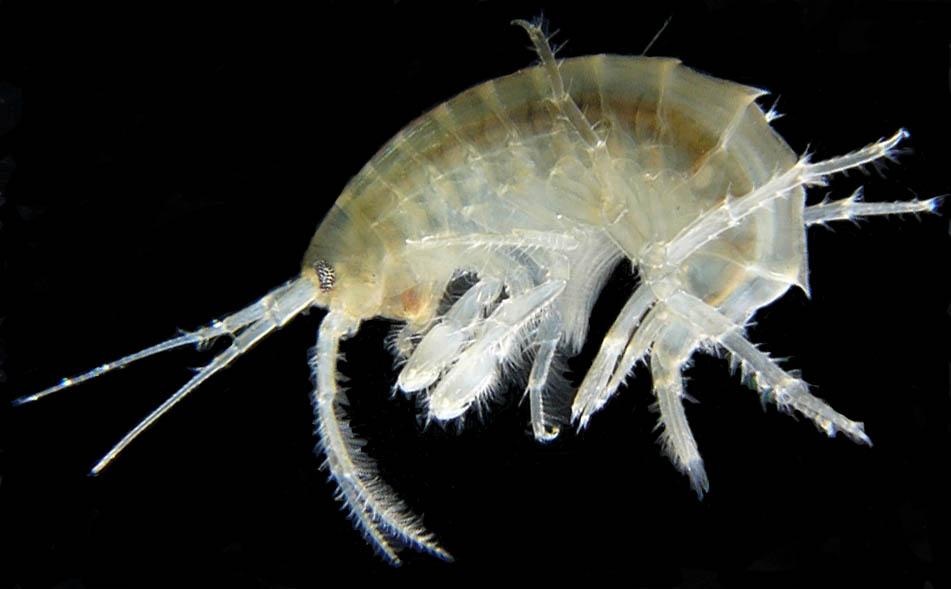
These are small shellless crustaceans, ranging from 1 mm to 34 cm in length. They are found in many aquatic environments, from fresh water to the deepest parts of the ocean. Amphipods mainly feed on carcasses or algae and play an important role in the ecosystem.
**4. Northern Stargazer:**

This fish has a flat body, black-brown skin with white spots. They hunt by hiding under the sand, only revealing their eyes and mouth. Another scary feature is that they have an electric organ on their head, which helps stun prey or threaten enemies.
**5. Coffin Fish:**

This fish has a round, spiny body, living in the deep sea off the coast of Australia. When threatened, they pump water into their gills to inflate their body, increasing their size by 30%. They hunt by using small baits on their heads to lure small crustaceans.
**6. Tongue-Eating Louse:**

This parasite severs the blood vessels on the fish’s tongue, causing the tongue to die. It then replaces the fish’s tongue and sucks nutrients from the host’s food.
**7. Atoya Worm:**

Living 520 million years ago, Atoya worms are predators that lurk in the sand. They have round mouths with dozens of spines to hold on to their prey.
**8. Blobfish:**
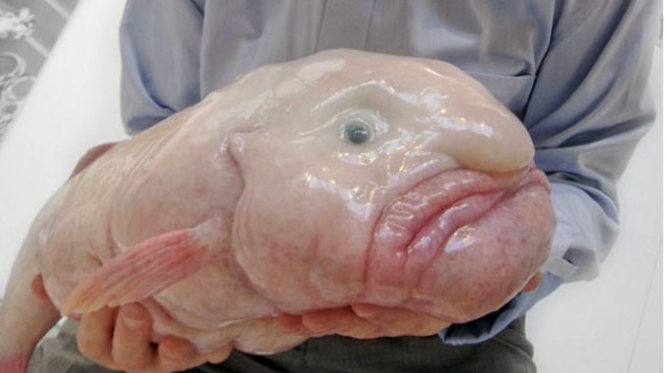
This deep-sea fish near Australia is shaped like a “gelatin ball.” Its body is designed to withstand the extreme pressure at the bottom of the ocean, allowing it to survive without expending much energy.
**9. Sarcastic Fringehead Fish:**

This fish is famous for its “mouth-to-mouth” display when fighting over territory. Their mouths can expand to four times their original size to intimidate opponents.
**11. Frilled Shark**

Frilled sharks grow to nearly 7 feet long, with fins set far back and gill slits shaped like tendrils, giving them their name. They are fierce predators, pouncing on prey and swallowing them whole, regardless of size. Frilled sharks swim like eels in undulating motions. They feed on a wide variety of fish, including other sharks, but specialize in hunting squid.
Because they are so rare, knowledge of frilled sharks comes mainly from dissections of captured fish and observations in captivity. They reproduce by internal fertilization and give birth to live young, but the embryos receive nutrition from a yolk sac instead of a placenta.
—
**12. Tardigrade**

Also known as “moss pigs,” tardigrades are small creatures with stubby bodies, wrinkled heads, eight legs, and claws. Although only 0.05–1.2 mm long, they are extremely durable, surviving temperatures ranging from -328°F to over 300°F, and withstanding radiation, the vacuum of space, and ocean pressure.
Water bears can survive for 10 days in low orbit without protection. Research suggests they could survive for billions of years, even if humans were to disappear.
—
**13. Goblin Shark**
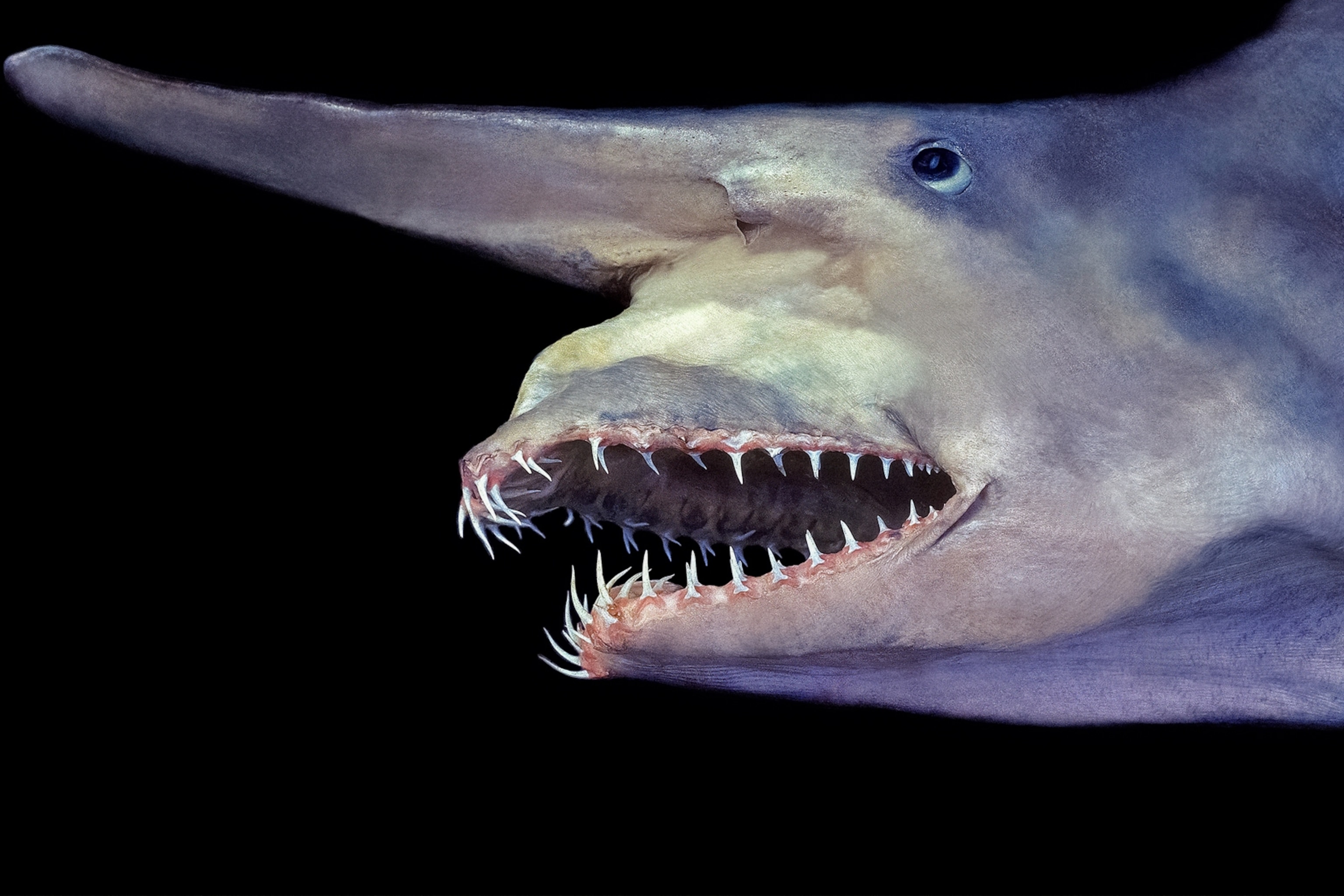
The goblin shark is an extremely rare deep-sea shark that lived 125 million years ago. With its long nose, sharp jaws, and pink body, it has been called a “living fossil.” It is 3–4m long, with some reaching 6m.
It lives at depths of more than 100m, and is usually slow due to its soft body and small fins. Goblin sharks hunt on the sea floor by detecting electromagnetic fields from prey.
—
**14. Vampire Squid**
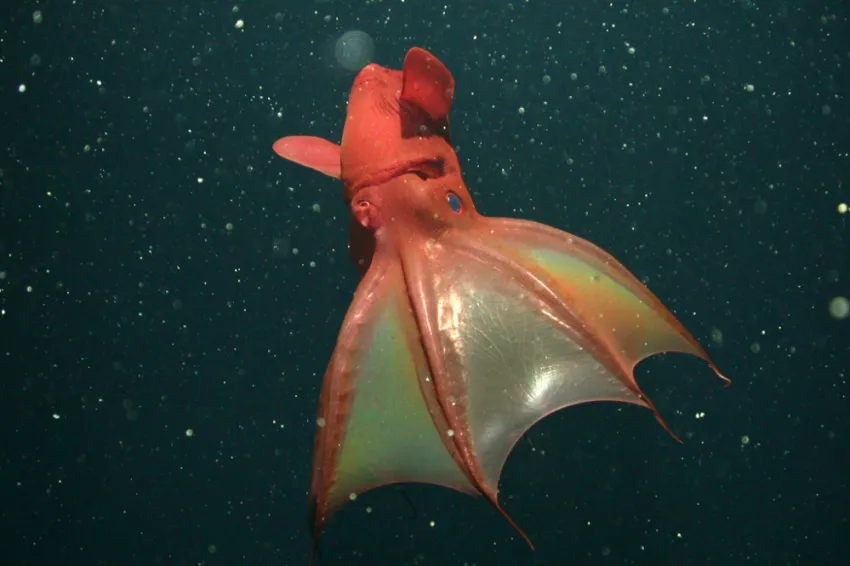
Vampire squid are not squids or octopuses, but are in their own group. With their black skin and membranes connecting their tentacles, they have a “goth” appearance.
These creatures live in deep, dark waters and do not hunt, but rather feed on carrion. When threatened, they expose large spines under their tentacles and secrete a glowing substance to distract predators.
—
**15. Black Swallower**

This fish lives at depths of 700–2,745m. Up to 25cm in length, they have large mouths that allow them to swallow prey larger than their body size. Their skin is scaleless, adapted to the deep ocean environment.
—
**16. Red-Lipped Batfish**

This fish lives near the Galapagos Islands, at depths of up to 75m. Although they are poor swimmers, they use their fins as legs to “walk” on the sea floor. They have prominent red lips, possibly to attract mates.
—
**17. Basking Shark**
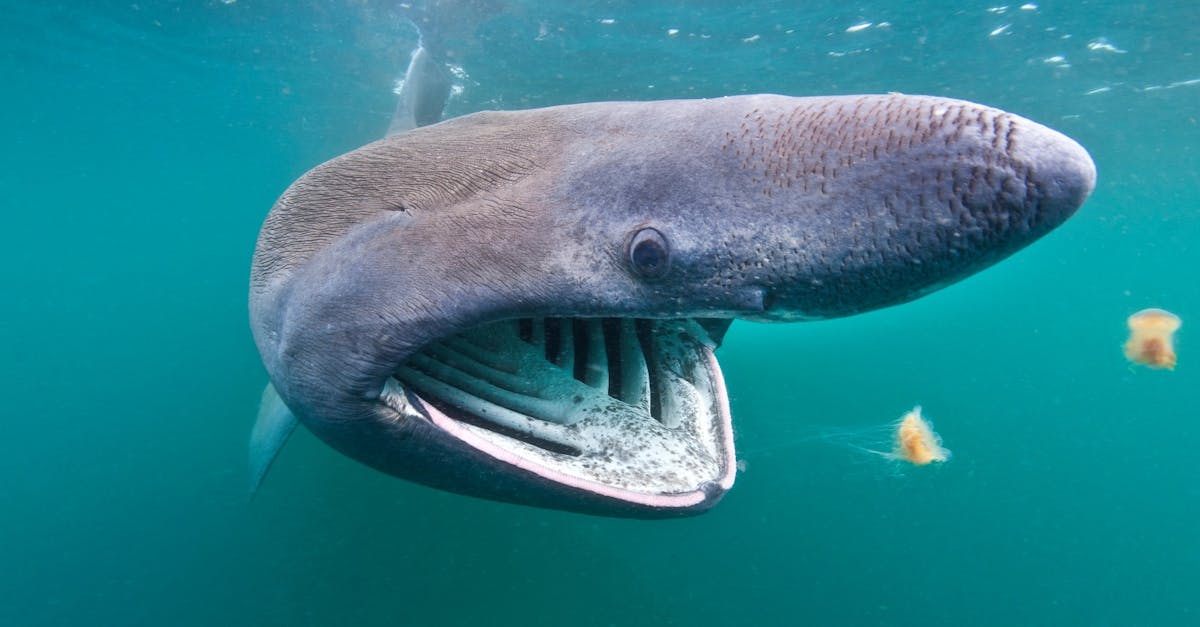
The basking shark, the second largest fish in the world, grows up to 40 feet long. Despite its fearsome appearance, it feeds only on plankton by swimming with its mouth open. It reproduces through internal fertilization and produces few, but large fry.
—
**18. Pelican Eel**

This eel has a mouth larger than its body, which helps it swallow large prey. Its stomach can expand to digest large meals. The eel’s tail has a glowing organ that it uses to attract prey.
—
### **19. Chimera**
Chimera live at depths of up to 2,600m, have large heads, soft bodies and grow up to 150cm long. Their skeletons are made of cartilage, their skin is smooth and they have no scales. Some species have venomous spines for defense.
—
### **20. Pacific Black Dragon**
This creature lives at depths of 700–3,300 feet, with a jet-black body and a stomach that hides light from prey. Females have teeth, a stomach, and glowing organs to lure prey, while males are smaller, do not eat, and only live long enough to mate.
—
These creatures, from ferocious neck sharks to eternal water bears, demonstrate the incredible diversity of the deep ocean. Despite living in dark, cold places, they have adapted and survived impressively.








